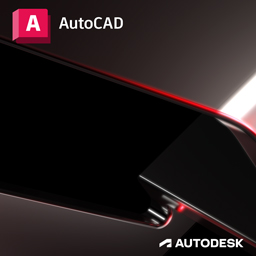As of April 30, 2025, we’re proud to announce our exciting new chapter. | Read more here.

This course covers the basic aspects of AutoCAD. It is intended for new users of the software, and is geared towards the AEC industry
You are viewing upcoming AutoCAD Essentials classes. Click here to view all classes available.
Explore self-paced online instruction with Pinnacle Series.
Design a unique class with your data sets and workflows.
Don’t see a class that works for you?
Class Details & Description
PREREQUISITE
Working knowledge of Windows OS
TRAINING OPTIONS
In-Person & Live Online Training Duration: 24 hours & Valid for 24 AIA LU
OnDemand Training: Applicable for AIA LU
Custom Training: Hours & AIA LU Varies
This course covers the basic aspects of AutoCAD. It is intended for new users of the software, and is geared towards the AEC industry.
EXPLORING THE AUTOCAD USER INTERFACE This section will familiarize attendees with running the software and with the use of the ribbon, palettes, and dialog boxes. Students will learn how to enter commands as well.
USING CARTESIAN COORDINATES Attendees will learn to use the x,y, and z axes, and how to enter values when creating entities.
OPEN, VIEW, AND SAVE FILES In this section, students will learn to open drawings as well as how to move around in them using zoom and pan. Attendees will learn how to saving drawings as well.
CREATING AND ERASING OBJECTS The central point of this section will be to instruct attendees on how to draw using lines, and how to erase or delete unwanted objects.
WORKING WITH POLAR TRACKING In this section users will learn to use polar tracking for more accurate placement of entities.
DRAWING RECTANGLES AND CIRCLES This portion of the class will show students how to create rectangles (closed polylines) and circles. Attendees will learn the various command options available.
WORKING WITH OBJECT SNAPS Students will learn what object snaps are and how to correctly use them. Attendees will learn the difference between running object snaps and overrides.
USING POLAR AND OBJECT SNAP TRACKING In this section, users will learn to track at angles and to use object snap tracking to find non‐existent locations for objects.
OBJECT EDITING This section will demonstrate the use of various editing commands. Students will learn to use the move, copy, rotate, scale, and mirror commands.
USING GRIP EDITING In this section, attendees will learn about grips and how these may be used as an alternative to many of the editing commands.
INTRODUCING LAYERS Attendees will learn what layers are and why they are important. Students will work with layer states and with changing the layer an object is on.
DRAWING, WORKING WITH, MEASURING, TRIMMING/EXTENDING, AND STRTECHING OBJECTS This part of the class will instruct students on how to create and edit arcs, polylines, polygons, and ellipses. Attendees will learn about the various sub‐options for these commands. Students will learn about the various properties of objects including layer, color, and linetype, and will use commands such as distance and area to measure the size of objects. Use of the trim, extend, and stretch commands and their sub‐options will also be explored.
CREATING FILLETS AND CHAMFERS Attendees will learn to use these two commands to modifying and connect existing objects. Students will learn the various sub‐options that are available.
USING THE OFFSET COMMAND In this section, attendees will learn how to use the offset command and its various sub‐options.
CREATING ARRAYS Students will learn how to create rectangular, polar, and path arrays using the new associative and non-associative features. Attendees will use preview mode to see the results.
WORKING WITH BLOCKS, DYNAMIC BLOCKS, DESIGN CENTER, AND CONTENT EXPLORER This part of the class will instruct students on what blocks are and how to insert them into files. Attendees will learn the difference between blocks and dynamic blocks. Students will learn the various options available with dynamic blocks, and will learn about Content Explorer and the Design Center palette and how to use them to manage block placement.
INTRODUCTION TO LAYOUTS AND PRINTING This part of the class will instruct students on what layouts are how to move, copy, and create them, and how to create model space viewports. Attendees will be introduced to printing concepts, such as page setups. Students will learn to print from both layout and model tabs.
USING TEXT This section will demonstrate the use of multi‐line text and leaders. Students will learn for to place and justify text.
INTRODUCTION TO TABLES Attendees will learn to create and modify Tables. Students will explore some of the various features of cells within the tables.
CREATING AND EDITING HATCHING Students will learn about what hatching is and how to work with the various options for different types of hatching. Attendees will also learn how to edit hatching.
PLACING AND EDITING DIMENSIONS In this final section, students will learn how to create linear, radial, and angular dimensioning. Attendees will work with the various dimensioning tools, and will learn how to edit existing dimensions.
Download the Curriculum »